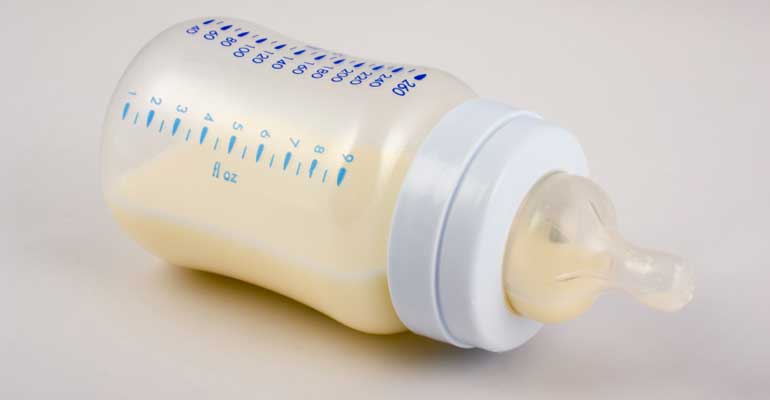What’s the deal with formula? DHA, ARA, iron or low-iron, warm or cold — with so many options and so much misinformation out there, it’s no wonder that many new parents have trouble figuring out how they’re supposed to feed their babies. Here are some guidelines that should clear up your confusion.
Standard infant formulas
Most adoptive parents will use a cows’-milk or soy formula for at least the first 12 months of life. (Children who are adopted at older ages and who have significant malnutrition, anemia, or vitamin deficiencies may need to stay on formula longer to promote nourishment and bonding with their new family.)
It’s best to maintain your baby’s current formula for at least a short period of time after you’ve adopted him. (Usually, the hospital, orphanage, or foster home can give you information on the exact type of formula used and how your baby likes it prepared.) If you decide to change your child’s formula (or need to change it to one more readily available in the U.S.), you can do it gradually by preparing bottles that contain a mix of the old and new formulas.
Standard cows’-milk formulas contain lactose, a complex sugar that is usually easily digested. Although parents of children born in Asian countries often fear that their children may have lactose intolerance, this is not usually a problem in the first year of life. But if your child has a lengthy bout of diarrhea or is diagnosed with galactosemia, a rare condition that renders a child unable to digest a building block of lactose, then lactose-free formula may be the answer. Before making any changes, consult your child’s health-care provider.
Babies are born with stores of iron from their mothers, but they soon use these up, so be sure your child’s formula is iron-fortified. Consumer advertising has recently emphasized two nutrients, DHA and ARA. These are fatty acids that naturally occur in breast milk that are important to brain development. DHA (docosahexaenoic acid) is important in vision development. ARA (arachidonic acid) promotes growth of the brain, nervous system, and retina. Most cows’-milk formulas are now fortified with these two nutrients.
In some cases, your child may need to use a special formula. Soy formula or predigested (also known as protein hydrolysate) formula is often fed to infants with digestive problems. Soy formula may also improve the skin condition of babies who have eczema, but it can cause constipation. Premature infants are often fed special high-calorie, nutrient-rich formulas until they’ve grown sufficiently to take a standard formula.
Cows’ milk should never be fed to babies under one year old. It lacks necessary vitamins and iron, which can lead to anemia and nutritional deficiencies, and it can cause intestinal bleeding in infants.
Formula preparation
Most infant formulas come in three forms: ready to feed (no preparation needed), liquid concentrate (water must be added, usually in equal amounts), and powder. The cost and convenience vary depending on the brand and form, so choose the one that feels right for your family.
In general, plain tap water can be safely used to prepare bottles, though there is a risk of lead exposure from the pipes. Use only cold water, and run the water for two minutes before adding it to bottles. If your family gets water from a pond or a well, it may need to be boiled.
Although many families warm the bottles before feeding, babies can generally tolerate formula at room temperature. Never warm formula in a microwave oven, as uneven heating could scald your infant. After each feeding, throw away leftover formula — don’t save it for the next feeding.
How much to feed?
Infants are usually fed every three to four hours, with feedings spread out during the night once they are gaining weight well. Most children are fed two to three ounces of formula per pound of body weight for the first three months of life. Once infants start solid food (at four to six months of age), their formula needs decrease due to other foods meeting their nutritional demands.



